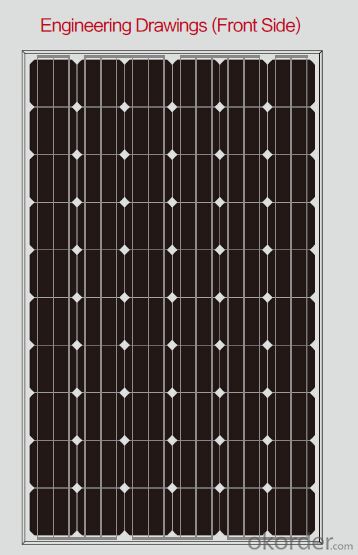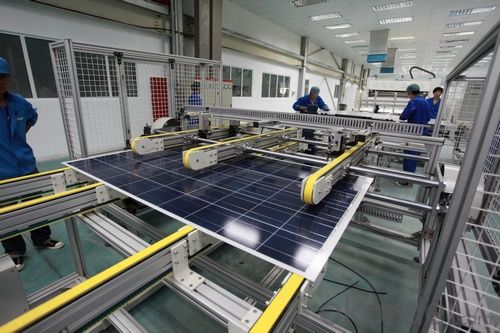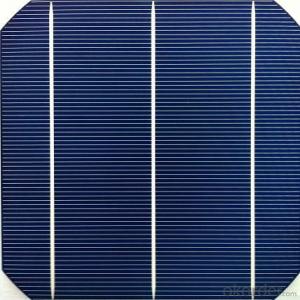Tecstar Solar Cells - High Efficiency and High Power Solar Modules
- Loading Port:
- Shanghai
- Payment Terms:
- TT OR LC
- Min Order Qty:
- 728 pc
- Supply Capability:
- 2000000 pc/month
OKorder Service Pledge
OKorder Financial Service
You Might Also Like
Specification
Advantage:
1.Widely using of the most popular and mature type of modulesfor on-grid system.
2.Specifications subject to technology and test conditions,GSUN Solar reserves the right of final interpretation.
3.Leading manufacturing technology in PV industry, strictly controlling the quality of raw materials and the process of producing.
4.100% EL inspection, ensures modules are defects free.
5.Cells binned by current to improve module performance.
6.Anti reflective glass. Not only to increase the light absorption, but also to make the module has the function of self-cleaning in water environment, effectively reducing the power loss caused by dust.
7.Outstanding performance in low-light irradiance environments.
8.Excellent mechanical load resistance: Certified to withstand high wind loads(2400pa) and snow loads(5400pa).
9.High salt and ammonia resistance.
10.Positive power tolerance:0-+5w.

Specification:
Temperature Coefficient
NOCT | 45℃±2℃ |
Temperature Coefficients of Isc (%/℃) | 0.0492 |
Temperature Coefficients of Voc (%/℃) | –0.3374 |
Temperature Coefficients of Pmp (%/℃) | –0.4677 |
Performance Parameters
31.9 | |
Max Power Current Imp(A) | 7.85 |
Open Circuit Voltage Voc(V) | 37.7 |
Short Circuit Current Isc(A) | 8.85 |
Max Power Pm(W) | 250 |
Mechanical Data
Dimension | 1655 x 992 x 40 mm |
Weight | 22.5kg |
No. of Cells and Connections | 60 (6 x 10) |
Tolerance | 0~+5W |
Cell | Monocrystalline Cell 156 x 156 mm |
Packing | 624 Pcs/40ft(H) Container |
Warranty
5 years product warranty
10-years 90% of Min. rated output power,and 25-years 80% of Min. rated output power warranty
Comprehensive Certificates:
CE Certificate
ISO 9001:2008:Quality management systems
IEC61215、IEC61730
TUV and UL
IDCOL for Bangladesh
Feature:
- High efficiency, multicrystalline silicon solar cells with high transmission and textured glass deliver a module effi ciency of up to 16.0%,minimizing installation costs and maximizing the kWh output of your
system per unit area.
- Tight positive power tolerance of 0W to +5W ensures you receive modules at or above nameplate power and contributes to minimizing module mismatch losses leading to improved system yield.
- Top ranking in the “TÜV Rheinland Energy Yield Test”
FAQ:What's your products warranty?
No less than 90% within 10yrs and no less than 80% within 25yrs.
FAQ:What's the power range can you supply?
We can supply from 5W to 315W solar panels.
FAQ: Can you design the solar system?
Yes, We can supply the battery and controller/inverter for your system with the solar panels together.
FAQ:How much Power can I expect to get from my Solar PV’s?
Typically an installed 1kWpk array will produce 800kWh/year. 2kWpk will produce 1600kWh/year and so on.
Why are PVs rated in kWpk rather then kilowatts?
kWpk means the power expected to be generated under the comparatively ideal conditions known as STC. In other words, a 100Wp panel will produce a maximum of 100W in peak (STC) conditions - this is equivalent to a bright sunny midsummer day in the UK.
How can I connect my Solar PV system to the grid?
You will need to use a grid-tie inverter. If you wish to get paid for the electricity you produce, you will need to ensure a G83-certified inverter is used and that it is installed by a Microgeneration Certification Scheme member whose membership number will need to be provided to your electricity supplier.
How much will I get paid for the electricity I feed into the grid?
If you install a qualifying small system (1-4kWpk) in the UK before October 2012 you will get paid 16 pence for every kWh you generate regardless of whether you use it yourself or export it to other users. This is a generation tariff or feed in tariff. It will go up each year in line with inflation. If you also use the electricity you have generated this means you do not have to buy it from the electricity company and so you will save around 11-15p per kWh at todays prices (Prices subject to change of course). Energy you generate but don't use yourself, i.e. you export it to the electricity company, will attract another payment to you of 4.5p per kWh. This payment is also index linked to the RPI so it will increase in line with inflation.
Is it true that I can get my electricity meter can spin backwards?
Not usually, nor is it legal to do this. The very old meters may cause this to happen however the company installing your PV will advise you if you need to ask for a meter replacement from the company supplying your electricity. This is usually free of charge.
- Q: Have you ever been to a solar cell power generation station?
- No, but I saw it on TV.
- Q: How do solar cells perform in regions with high levels of air pollution?
- Solar cells tend to perform less efficiently in regions with high levels of air pollution. The particles and pollutants in the air can block sunlight from reaching the solar cells, reducing their ability to generate electricity. Additionally, air pollution can accumulate on the surface of the solar panels, further reducing their efficiency. Regular cleaning and maintenance of the solar panels can help mitigate the impact of air pollution on their performance.
- Q: Can solar cells be used in commercial applications?
- Yes, solar cells can be used in commercial applications. They are commonly deployed in various sectors such as residential, industrial, and agricultural settings to generate electricity from sunlight. Many commercial buildings, factories, and even solar farms utilize solar cells to harness renewable energy and reduce reliance on traditional power sources.
- Q: How do solar cells perform in coastal environments?
- Solar cells perform well in coastal environments as they are not affected by the presence of salt in the air. However, high humidity levels and salt spray can potentially impact the performance of solar cells over time, requiring regular maintenance and cleaning to ensure optimal efficiency.
- Q: Can solar cells be used in greenhouses?
- Yes, solar cells can be used in greenhouses. They can help generate clean and renewable energy to power various functions in the greenhouse, such as lighting, ventilation, and irrigation systems. By harnessing the sun's energy, solar cells contribute to making greenhouses more sustainable and reducing reliance on fossil fuels.
- Q: Can solar cells be used in water heating systems?
- Yes, solar cells can be used in water heating systems. Solar thermal collectors, which use solar cells, can capture sunlight and convert it into heat energy to warm water. This technology is commonly used in solar water heating systems, where the heat generated by solar cells is transferred to water in order to provide hot water for various purposes.
- Q: Can solar cells be used in space?
- Yes, solar cells can be used in space. In fact, they are commonly used on satellites and spacecraft to generate electricity by converting sunlight into energy.
- Q: Is it complicated to make a solar cell work well?
- You need to be very experienced to make a solar cell work well.
- Q: Can solar cells be used in desert environments?
- Yes, solar cells can definitely be used in desert environments. In fact, solar energy is particularly well-suited for such locations due to the high levels of solar radiation and clear skies typically found in deserts. The arid climate and ample sunlight make desert regions ideal for harnessing solar power, allowing solar cells to generate a significant amount of electricity.
- Q: How can I calculate the cost of using solar cells if I put a fully-functional solar system in my house?
- Oh gosh, that would a lot, are you really ready to see your bill?
Send your message to us
Tecstar Solar Cells - High Efficiency and High Power Solar Modules
- Loading Port:
- Shanghai
- Payment Terms:
- TT OR LC
- Min Order Qty:
- 728 pc
- Supply Capability:
- 2000000 pc/month
OKorder Service Pledge
OKorder Financial Service
Similar products
Hot products
Hot Searches
Related keywords




























